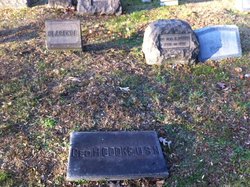ST. GEORGE HENRY COOKE
The death of Captain St. George Henry Cooke removes from the Club rolls one of the most prominent and promising of its younger members and leaves to mour his loss a large circle of friends to whom he had endered himself.
St Geore Henry Cook, son of Rear Admiral George H. Cooke, U. S. N., retired, was born in Philadelphia, Penna. June 2, 1883. He was graduated with the degree of C. E. from Pensylavania Military College, Chester, Pa., June 18, 1902, and immediately thereafter entered the employ of Roydhouse Arey and Co. He successfully supervised construction work for this firm in Philadelphia and Altoona until December, 1905, when he served his connection to accept a position as Assistant Engineer in connection with the construction of the Tidewater Railway Co.
A man of unusually promising professional attainments, he is best known to the Club membership for his connection with the successful military organization which represents the Club in the National Guard of Pennsylvania. On January 8, 1909, this organization, composed of Club members, was mustered into the service of the Commonwealth as Co. "B" Engineer Battalion, N. G. P., and Captain Cooke was unanimously chosen as its Commanding Officer. Military by instinct he threw himself with energy and enthusiasm into the work of organization and training. So marked was the success of his efforts that the Company soon took rank among the leading units in the State service and gained for its commanding officer the official approbation of the U. S. War Dept., as "an officer eminently fitted for command."
Elected to the Engineers' Club as a junior member, Feb. 20, 1904, he was transferred to Active membership Dec. 31, 1908, and served as Director from January 1911, until March, 1913. Captain Cooke was also an Associate Member, American Society of Civil Engerineers; American Society of Mechanical Engineers, and was a member of the Military Order of the Loyal Legion.
Suddenly stricken in the midst of his activities in July, 1912, he made a long and brave fight against the encroachments of disease. A short residence at Saranac Lake, N. Y., seemed to afford some relief and in December, 1914, he went to Fort Bayard, N. M., in hope of more permanent results. Here the Grim Reaper found him and on Jan. 12, 1915, he bravely surrendered all that young life might hold for him and passed "over the river to rest unded the shade of the trees." Able, conscientious, lovable, he left in enduring organization which he builded and scores of friends who will remember him only with love and with regret.
His widow, Isabelle Dalmas Cooke,and three small children survive.
ST. GEORGE HENRY COOKE
The death of Captain St. George Henry Cooke removes from the Club rolls one of the most prominent and promising of its younger members and leaves to mour his loss a large circle of friends to whom he had endered himself.
St Geore Henry Cook, son of Rear Admiral George H. Cooke, U. S. N., retired, was born in Philadelphia, Penna. June 2, 1883. He was graduated with the degree of C. E. from Pensylavania Military College, Chester, Pa., June 18, 1902, and immediately thereafter entered the employ of Roydhouse Arey and Co. He successfully supervised construction work for this firm in Philadelphia and Altoona until December, 1905, when he served his connection to accept a position as Assistant Engineer in connection with the construction of the Tidewater Railway Co.
A man of unusually promising professional attainments, he is best known to the Club membership for his connection with the successful military organization which represents the Club in the National Guard of Pennsylvania. On January 8, 1909, this organization, composed of Club members, was mustered into the service of the Commonwealth as Co. "B" Engineer Battalion, N. G. P., and Captain Cooke was unanimously chosen as its Commanding Officer. Military by instinct he threw himself with energy and enthusiasm into the work of organization and training. So marked was the success of his efforts that the Company soon took rank among the leading units in the State service and gained for its commanding officer the official approbation of the U. S. War Dept., as "an officer eminently fitted for command."
Elected to the Engineers' Club as a junior member, Feb. 20, 1904, he was transferred to Active membership Dec. 31, 1908, and served as Director from January 1911, until March, 1913. Captain Cooke was also an Associate Member, American Society of Civil Engerineers; American Society of Mechanical Engineers, and was a member of the Military Order of the Loyal Legion.
Suddenly stricken in the midst of his activities in July, 1912, he made a long and brave fight against the encroachments of disease. A short residence at Saranac Lake, N. Y., seemed to afford some relief and in December, 1914, he went to Fort Bayard, N. M., in hope of more permanent results. Here the Grim Reaper found him and on Jan. 12, 1915, he bravely surrendered all that young life might hold for him and passed "over the river to rest unded the shade of the trees." Able, conscientious, lovable, he left in enduring organization which he builded and scores of friends who will remember him only with love and with regret.
His widow, Isabelle Dalmas Cooke,and three small children survive.
Family Members
Sponsored by Ancestry
Advertisement
Advertisement













